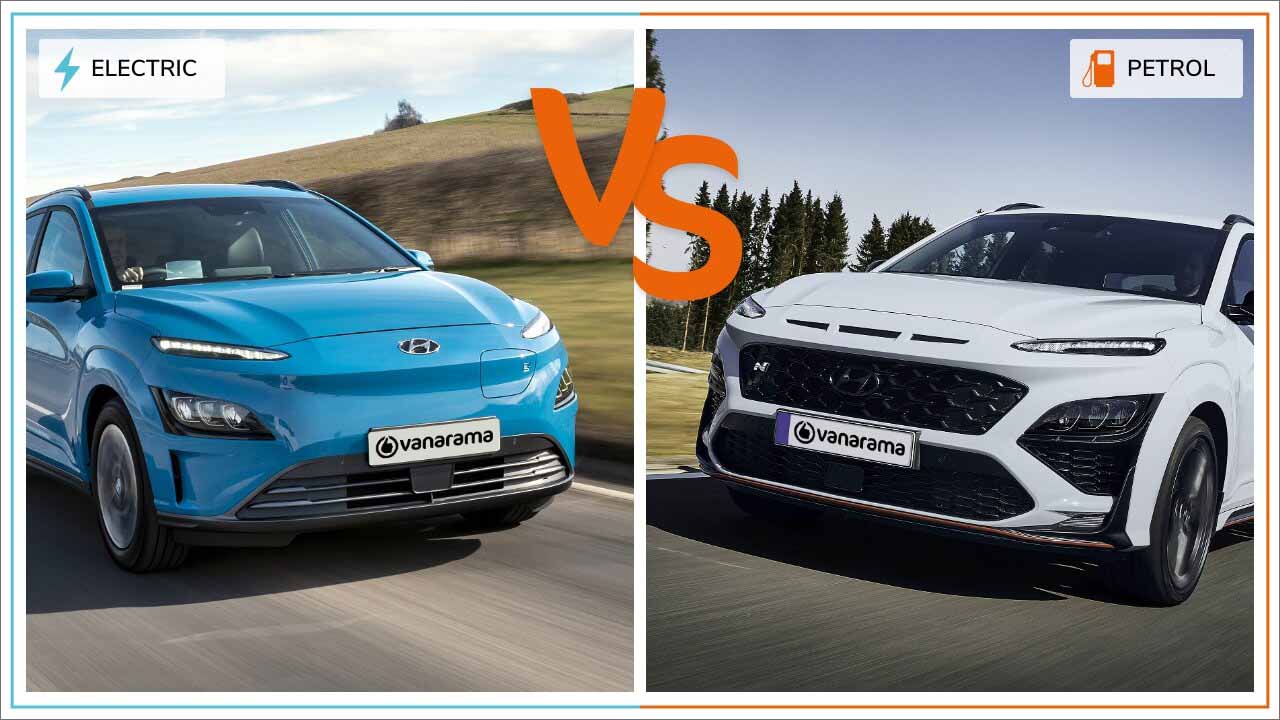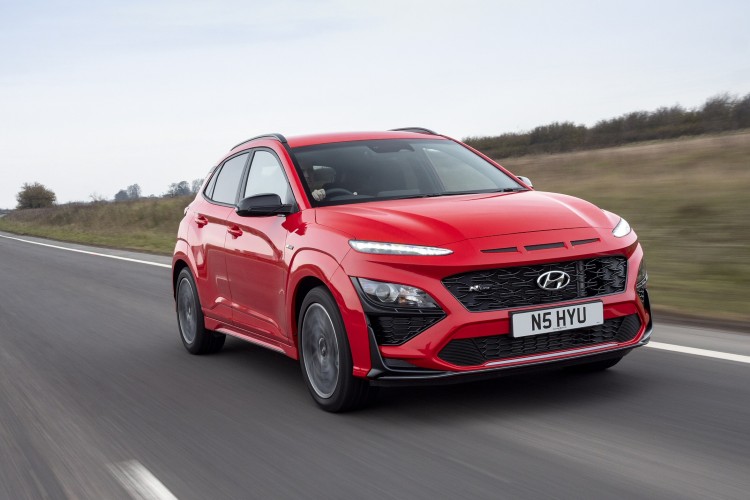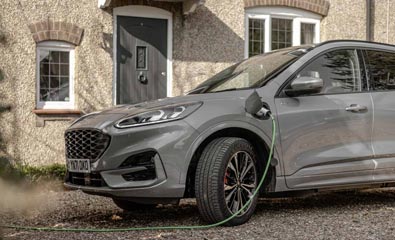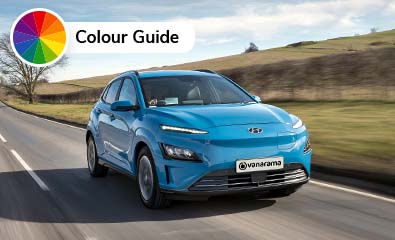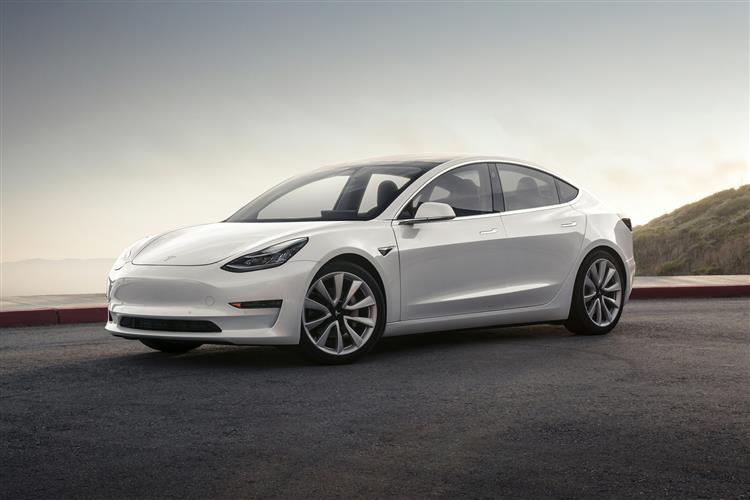The Hyundai Kona range has something to suit almost every pocket and need. Whether you want an affordable small crossover with low running costs or the slightly barmy and loveable N performance version, it’s all there. Hyundai has done away with the diesel engine option due to lack of demand, but you still have both a mild- and full-hybrid model. Then there’s the Kona Electric as the mains, ahem, attraction.
What the Kona Electric does is offer anyone interested in an electric car, no matter whether it’s someone fully ready to commit or a driver just thinking about it, a compelling vehicle. Go for the model with the smaller 39kWh battery and it’s easy on the wallet, especially when leased, and still has a reasonable driving range. Or choose the 64kWh version that we have for this comparison and you get a battery range that removes all concerns about running out of charge. It also comes with strong performance and is affordable and well kitted-out, so you get the best of all worlds in a practical package.
Design Differences
You don’t need keen detective skills to spot the differences between the mild-hybrid Kona and the Electric version. A quick glance at the front will tell you the Electric does without the large upper grille, though both share the same double stack of lights front and back.
Side-on, it’s harder to tell the two apart, but at the back you’ll see the Electric has a less obviously sporting lower bumper insert. Peer closely at the tailgate and you’ll also find an ‘Electric’ badge on the EV and slightly confusing ‘Hybrid’ badge on the mild-hybrid model. All models are currently available in 12 paint colours with various interior choices, see our Hyundai Kona colour guide for more details.
Inside, it’s also slim pickings in the spot-the-difference competition as both cars being compared here have the same dash and upper centre console. However, look between the seats and you find the Electric has a raised transmission tunnel that floats over an open space below. It lends the cabin a more modern feel in our view and we really like the simple buttons to select Drive, Reverse, Park and Neutral – the gear selection is fly-by-wire, so no need for any physical connection to the electric motor.
Students of engineering will note the mild hybrid and the Electric have very different platforms underneath their bodies. The petrol car has a layout familiar to almost all in this class, with the petrol engine mounted transversely at the front and driving the front wheels through a 6-speed manual gearbox in this case.
For the Electric, the battery lies like a pancake under the passenger cabin and sends its power to the electric motor that sits between the front wheels. As you drive, you can select from 3 drive modes to vary the amount of regenerative braking that recharges the battery. In its most powerful state, you can drive the car in ‘1-pedal’ fashion, though not everyone likes the strong braking effect as you come off the accelerator pedal.
Driving Differences
There is something pleasingly comical about the acceleration of the Hyundai Kona Electric in either of its power options. Even the slower version has the sort of get-up-and-go to give many more obviously quick and powerful cars a run for their money. Take the more powerful 64kWh model that we have in this comparison and it’s downright hilarious to drive a sober-looking small crossover that can outgun a Ford Fiesta ST off the mark.
Such smirk-inducing fun might sound infantile, but it’s a worthwhile measurement for how the Kona Electric can get up to speed on a motorway or nip out of a busy junction. Take the petrol model in this test and you will be waiting for a much bigger gap to open up as it falls on the wrong side of tardy. Once moving, the 3-cylinder engine is happy to whirr along, though it’s far from the most refined. In the Electric, refinement is markedly better.
The Electric also handles with more competence and feels more connected to the road, though a Volkswagen ID.3 is still a good deal better to drive overall. Still, the EV Kona’s ride is compliant and doesn’t raise any red flags, whereas the mild hybrid’s edges towards being a little too firm on more rumpled tarmac.
Practicality Differences
The Kona Electric succumbs to the same issue as many EVs when it comes to boot space compared to their fossil-fuelled siblings. With the rear seats in place, the Electric offers 332 litres of space and then up to 1114 litres with the 60/40 split-and-tip back seats folded down. That compares to 374 and 1156 litres in the petrol car, so you won’t have to leave the family dog at home if you decide to go down the electric route. However, neither Kona version leads the class for boot space.
Move into the front cabin and there is just as much room for the driver’s head, legs and elbows in both Kona versions. The Electric’s raised transmission tunnel console doesn’t impinge on comfort or space and we prefer it as it offers an armrest, as well as bringing the cup holders closer to hand.
An often overlooked point during a test drive is all-round vision for changing lanes and parking. The Kona raises no concerns here and dishes up better views in most directions than the majority of cars in its class. A standard reversing camera negates any problems with the Hyundai’s thick rear pillars.
Look inside the cabin, and the main dash and infotainment screens are clear and simple to read, while buttons for the heating and ventilation are welcome and intuitive to use.
Running Cost Comparison
This is usually the bit where we say the EV model is good but if you need to travel further afield, you’ll need the petrol or diesel version. Not so with the Kona Electric. Choose the larger battery version like we have here and it has a claimed range of 300 miles. That equates to a very real 260 miles or even more if you make the most of the regenerative braking modes. Yes, the petrol mild hybrid has a possible range of around 500 miles to a tank, thanks to its 47.1mpg combined economy, but we reckon the 2 cars are on a par when travelling on long journeys, helped by the EV’s quick charging times.
Company drivers will appreciate the Electric’s zero emissions and resulting low benefit-in-kind (BIK) payments. A low-rate taxpayer can expect to spend just £70 per year on BIK, compared to £1463 for the petrol-electric model that emits 137g/km next to the EV’s zero tailpipe emissions. This also means the Kona Electric qualifies for free Vehicle Excise Duty where the mild-hybrid driver stumps up £220 in the first year. In the petrol’s favour is a group 11 insurance rating, while the EV resides in group 22.
Hyundai is rightly praised for its excellent standard warranty and both cars here have 5-year, 100,000-mile cover. For the Electric, Hyundai also goes further than most car makers by offering an 8-year, 125,000-mile battery warranty.
Living With the Electric Kona
Hyundai supplies the Kona Electric with 2 charging cables, one for a domestic 3-pin socket and the more useful Mode 3 cable for AC charging at public stations. The car is compatible with 100kW rapid chargers, which means the 64kWh battery model can go from 10% charge to 80% in less than 50 minutes. On a fully charged battery, the 64kWh Kona Electric has a range of 300 miles, while the 39kWh version claims 189 miles.
The Hyundai Bluelink app lets you access all of the usual EV remote checks and functions. You can find out the battery’s charge and how far it will take you, as well as how much longer it will take to charge up. You can precondition the car to your ideal temperature while still attached to a charger, lock or unlock the doors, and check the vehicle’s location.
Summary
You can't accuse Hyundai of not offering Kona customers lots of choice. With the Hybrid model in the middle, and the mild hybrid and Electric either side plus the hot hatch N version, there’s something here for almost everyone. If you go down the all-electric route, the key decision is between battery size that decides driving range.
Overall, We’d go for the 64kWh electric model for its ability to cover more miles between charges and because it’s just the best Kona.
Head here for fantastic Kona leasing deals on all available versions.

